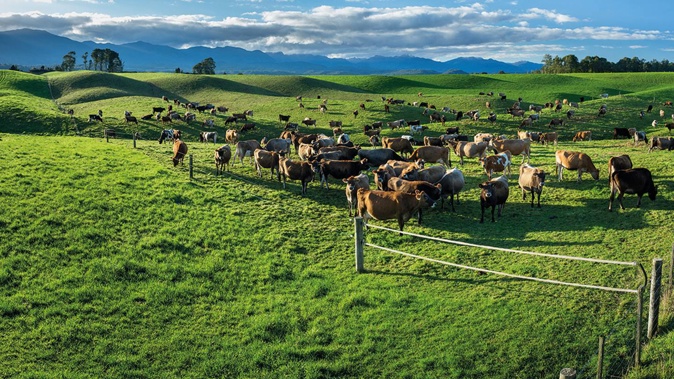
New Zealand’s commodity exports took a hit in November, with weaker prices made worse by a rampant kiwi dollar, ANZ said.
The bank, New Zealand’s biggest rural lender, said its ANZ World Commodity Price Index fell by 3.9 per cent in the month, driven mostly by meat and log prices.
In local currency terms the index plunged 9.1 per cent, as the NZ dollar appreciated 4.6 per cent against the Trade Weighted Index.
A strong kiwi reduces exporter returns as foreign currency earnings are repatriated into relatively fewer New Zealand dollars.
The currency, buoyed by higher interest rates, has shot up from US55.6c in mid-October to around US64c today.
ANZ’s agricultural economist Susan Kilsby said global shipping prices were starting to normalise from very high levels but it was still far from plain sailing for exporters as the costs of moving goods from New Zealand were still considerably higher than prior to the pandemic.
She said there was still ongoing disruption in shipping schedules.
Dairy fell in November reflecting weak global demand at present, although there were tentative signs that relatively slow growth in milk output is now providing support to prices.
Kilsby said the softer dairy prices recorded in the month reflected the fact that global demand is weak at present, although there are tentative signs that relatively slow growth in milk output is now providing support to prices.
New Zealand’s milk supply is tracking 3.5 per cent lower, year-on-year, for the season to date.
- Study shows NZ beef and lamb among the world's most carbon efficient
- Sam McIvor: $775 million in export lost as farmland is turned to forestry
At the most recent Global Dairy Trade auction in mid-November, dairy prices partially reversed a slide slower to gain 2.4 per cent overall.
ANZ’s meat and fibre index recorded the largest move in November, down 6.3 per cent following a drop of a similar scale in the previous month.
Lamb prices fell the most (9.5 per cent), which was not surprising given that lamb is a luxury product in most markets, meaning demand has been impacted by deteriorating economic conditions, Kilsby said. Lamb prices are now down 20.4 per cent, year-on-year.
The horticulture index also weakened by 2.7 per cent during November.
Apple prices fell heading into the end of the season as quality issues impacted prices.
Similar issues have also impacted the kiwifruit industry, where many growers have had to contend with lower yields as well as reduced returns due to fruit-storage issues.
The forestry index also declined 3.3 per cent in November, with log prices back 4.8 per cent, month-on-month.
New Zealand exporters are highly reliant on China for trading logs and at present demand for logs from this market has been impacted by the rapid rise in Covid-19 cases.
Aluminium prices continued to buck the trend, rising 4.4 per cent in November.
ANZ’s Kilsby said that despite the recent uptick in prices aluminium pricing is still 10.8 per cent down, year-on-year.
Aluminium inventories are declining, which has offset demand concerns and pushed prices higher, she said adding smelters in China are reducing production to reduce pollution.
Take your Radio, Podcasts and Music with you









